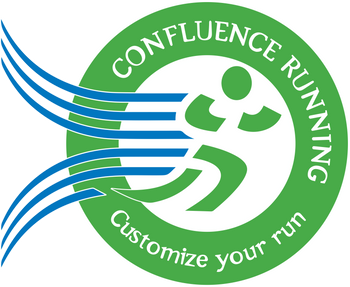Understanding Biomechanics: Improve Strength, Stability, and Performance

Overview of Basic Biomechanics: A Comprehensive Guide
Biomechanics explores the mechanical laws that govern the movement and structure of living organisms. By understanding how our bodies move in three-dimensional space, we can improve performance, minimize injury, and maximize efficiency. This lecture delves into the foundational principles of biomechanics, including muscle mechanics, contraction types, forces, range of motion, and recovery strategies.
Dive In: Pyramid Training | Compound Sets vs Supersets | VO2 Max
What is Biomechanics?
Biomechanics is the study of how mechanical principles apply to the movement and structure of living organisms. It helps us understand how muscles, bones, and joints interact to produce movement.
Muscular Groups in Action
Different sports and activities engage various primary muscle groups:
-
Swimming: Primarily uses the deltoids and latissimus dorsi.
-
Cycling: Engages the glutes, quadriceps, and calves.
-
Running: Focuses on the hamstrings, glutes, and calves.
Strength Gains: Neurological Development
The majority of initial strength gains in training come from neurological development, not muscular growth or metabolic efficiency. Improved communication between the brain, spinal cord, and muscles enhances the ability to contract muscles more efficiently.
-
Short-term gains: Neurological improvements.
-
Long-term gains: Muscle growth and metabolic adaptations.
Muscle Growth: Hypertrophy vs. Hyperplasia
Muscle growth occurs primarily through hypertrophy, an increase in muscle fiber size, rather than hyperplasia, which involves an increase in the number of muscle fibers.
-
Hypertrophy:
-
Common in humans.
-
Increases the diameter of muscle cells.
-
Leads to strength and size gains.
-
-
Hyperplasia:
-
Rare in humans.
-
Involves the creation of new muscle fibers.
-
Types of Muscle Contractions
Muscle contractions are classified into three categories based on movement and tension:
1. Isometric Contraction
-
Definition: Muscle contracts under tension without changing length.
-
Examples: Planks, holding a pull-up position.
-
Benefit: Develops balance and stability.
2. Concentric Contraction
-
Definition: Muscle shortens under tension.
-
Examples: Lifting a dumbbell in a bicep curl or pulling water during a swim stroke.
-
Benefit: Enhances power and performance.
3. Eccentric Contraction
-
Definition: Muscle lengthens under tension.
-
Examples: Lowering yourself from a pull-up or descending in a push-up.
-
Benefit: Builds strength and promotes muscle growth.
Forces Acting on Bones
1. Compression Forces
-
Definition: Forces that push bones together.
-
Examples: Locking elbows during a push-up.
-
Benefit: Stabilizes joints and reduces muscle fatigue.
2. Distraction Forces
-
Definition: Forces that pull bones apart.
-
Examples: Hanging in a pull-up position.
-
Benefit: Provides a brief recovery for muscles during exercises.
Range of Motion (ROM) in Exercise
Performing exercises with a controlled full range of motion (ROM) ensures proper muscular development and reduces injury risk.
Benefits of Full ROM:
-
Injury Reduction: Minimizes chronic injury risks from repetitive, unstable movements.
-
Skill Development: Promotes better muscle efficiency and performance.
-
Muscle Growth: Enhances muscle fiber recruitment and adaptation.
Trigger Points and Recovery
Trigger points are sensitive areas in muscle fascia that cause pain in other regions, known as referred pain.
-
Example: A tight glute muscle can cause knee pain.
-
Solution: Use foam rollers or targeted massage to release trigger points.
For more resources, visit triggerpoints.net.
Summary
Biomechanics offers valuable insights into how our bodies move and adapt. Key takeaways include:
-
Strength Gains: Primarily come from neurological development in the short term.
-
Muscle Growth: Occurs through hypertrophy, with hyperplasia being rare.
-
Muscle Contractions: Include concentric (power), eccentric (strength), and isometric (stability).
-
Forces on Bones: Compression and distraction forces stabilize and influence joint and muscle recovery.
-
Full ROM: Reduces injury risk and enhances performance.
-
Trigger Points: Addressing these can relieve pain and improve mobility.
By applying these principles, you can optimize your training, reduce injuries, and achieve peak performance.
All HWS Lecture Series Links
| Lectures | Link |
|---|---|
| Mastering SMART Goals | Mastering SMART Goals |
| Concept of Overload | Concept of Overload |
| Periodization Theory | Periodization Theory |
| Muscular Anatomy | Muscular Anatomy |
| Overview of Basic Biomechanics | Overview of Basic Biomechanics |
| Metabolism and Energy Systems | TBD |
| What is VO2 Max? | What is VO2 Max? |
| Overview of Heart Rate Training Zones | TBD |
| Biological Discussion Wrap-Up | TBD |
| Dynamic Footwear Science | Dynamic Footwear Science |
| Basic Nutrition | Basic Nutrition |
| Circuit Training | Circuit Training |
| Pyramid Training | Pyramid Training |
| Compound Sets vs Supersets | Compound Sets vs Supersets |
| Myers Briggs Personality & Fitness | TBD |
| How to Improve Your Motivation in Fitness | TBD |
| Positive & Negative Reinforcement & Punishment | TBD |
| How do Plyometrics Aid in Adaptations? | How do Plyometrics Aid in Adaptations? |
| Enhance Your Fitness with Recovery Techniques | TBD |
Tags for Understanding Biomechanics
biomechanics basics, understanding biomechanics, muscle contractions explained, isometric vs concentric contractions, eccentric contraction benefits, range of motion in exercise, importance of full ROM, compression and distraction forces, biomechanics for athletes, strength and muscle growth, hypertrophy vs hyperplasia, trigger points and recovery, injury prevention biomechanics, biomechanics for performance, role of biomechanics in fitness, muscle growth mechanisms, biomechanics training tips, neuromuscular development, optimizing workouts with biomechanics, biomechanics in sports training



